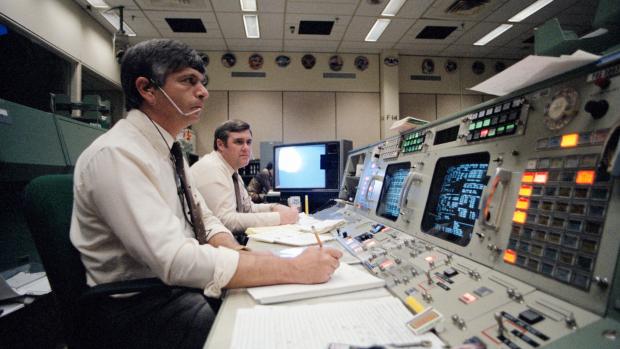An Out-of-This-World Career
Alum Jay Greene is honored for his distinguished career with NASA

In 1964, after Jay Greene graduated with a degree in electrical engineering from what was then called the Brooklyn Polytechnic Institute (a school he had chosen for its solid reputation and affordability), he craved travel and adventure. Accepting a job at the California-based North American Aviation, he packed his bags and moved some 3,000 miles away from his native borough.
Greater adventure awaited, however, in the form of a telegram from the Manned Spacecraft Center, just months later. A job awaited, if he were willing to pull up stakes and move to Houston. Before even asking the specifics of the offer, Greene packed up his worldly possessions and headed to Texas.
Little did he know that he was embarking on a path that would place him at the center of several historic events, including the 1969 lunar landing and the 1986 Space Shuttle Challenger disaster. (The first hint that this would be no ordinary job came when he visited the personnel office upon his arrival; astronaut John Glenn was waiting at the counter just ahead of him.)
Assigned as a Flight Dynamics Officer, Greene began working on the Apollo program. His duties during an ascent phase included monitoring the trajectory of the space vehicle; once the vehicle was in orbit, he oversaw needed maneuvers (such as during a rendezvous); and during reentry, he monitored the capsule’s descent through the atmosphere.
Greene was at Mission Control when Apollo 8 became the first manned spacecraft to leave Earth’s orbit, circle the moon, and return safely to Earth. He has recalled going home that evening to his apartment complex — which housed many Space Center employees — and sitting by the pool with a good bottle of Scotch to gaze at the moon.
Greene manned the Flight Dynamics Console during the descent of the lunar module in 1969, after Apollo 11 had carried Neil Armstrong and Buzz Aldrin to the Moon. He marvels, now, that the entire building he was working in had less computational capability than a smartphone. Flight dynamics officers used now-obsolete 40-pound calculators with thousands of gears, because desktop computers had not yet become available; inputting information into the room-sized computer housed on another floor required them to contact him via a comm loop to a technician sitting there.
On January 28, 1986, Challenger broke apart just 73 seconds into its flight because of malfunctioning O-ring seals within a solid rocket booster. Greene was serving as flight director on that ill-fated mission, which marked the first time NASA had lost a crew in flight.
That tragic event contributed to his decision to accept a post as head of NASA's newly created safety division, and he later went on to take a series of other senior posts within the agency, including Deputy Associate Administrator for Exploration, Manager of the Space Shuttle Engineering Office, Deputy Manager for Technical Development on the International Space Station, and Chief Engineer at Johnson Space Center.
One of Greene’s proudest accomplishments was managing the International Space Station (ISS), which is widely considered one of mankind’s greatest engineering achievements. Many, including George Abbey, former Center Director of the Johnson Space Center, credit him for the success of the ISS. For Tandon students who might want to follow in his footsteps, Greene — who was recently awarded the 2016 NYUAA Distinguished Alumnus Award — says: “I recommend taking a broad range of classes. The benefit of engineering is that it teaches you how to think and address problems in a systematic process, and NASA has openings for almost all disciplines.”
Greene retired from NASA in 2004 and continues to find himself in demand as an interview subject, because of his unique vantage point on U.S. space exploration. And while others may call him a living legend, we’re very proud to call him an alum.




